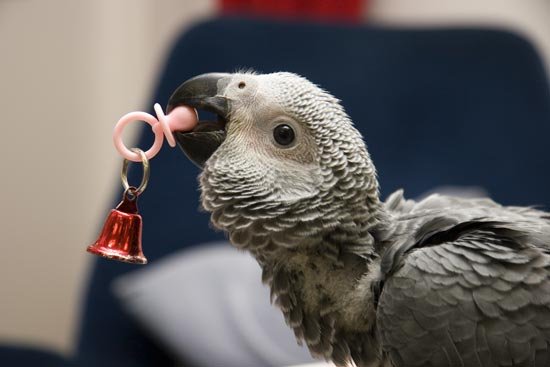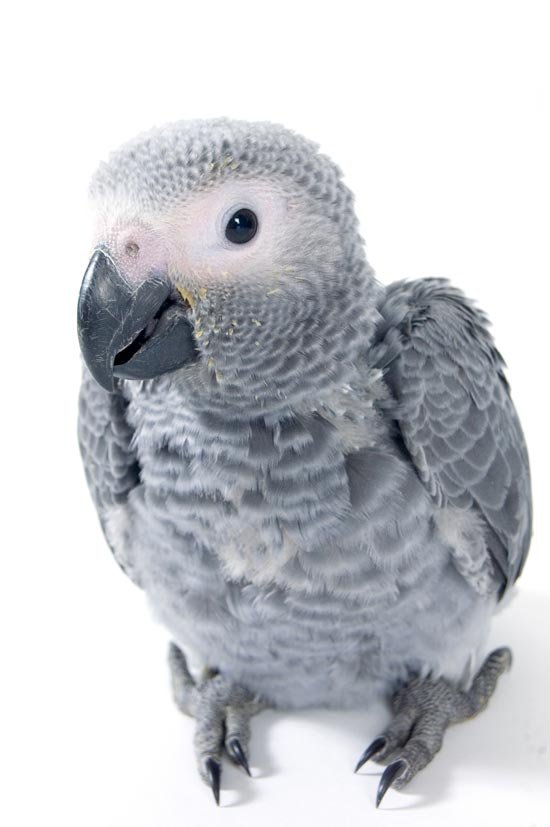So you’ve decided you want to get a Parrot. You think they are beautiful and you know they can talk, and loveliest of all, you don’t have to walk them like a dog … so what a great companion! 
Like human children, Parrots can become more headstrong as they mature, and have their own opinions about what they wish – and don’t wish – to do. Conflicts arise with untrained youngsters, often costing them their homes. To see the tragic truth of this, just look in the “Pets for Sale” section of your local newspaper. Most of the birds for sale will be 8-24 months of age.
So you’ve decided you want to get a Parrot. You think they are beautiful and you know they can talk, and loveliest of all, you don’t have to walk them like a dog … so what a great companion!
Maybe you’re different from most of us and have actually done some reading, so you think you have an idea of what you are getting into.
Of course, I hear you can’t read a book about raising children and learn what it is like to be a parent, either, but at least you’ve tried!
You do know that you want a baby Parrot so it will “bond” to you (though adult birds bond also, often forming much stronger ties).
You’ve heard about a really, REALLY big bird store in the area so off you go. You really aren’t sure what kind of Parrot you want. There’s that lovely blue one, and the green ones are such good talkers but those white ones, well ... they seem so incredibly lovable.
What reading you’ve done totally contradicts the other reading you’ve done, which surely doesn’t help, so you’ve decided to just go with the flow and just see what happens.
(Needless to say, very soon you will discover that, in addition all that cuteness inherent in a baby Parrot come incredible complications , shocking monetary outlay, and astonishing hours of daily work, along with frequent annoyances, a cacophony of noise and astounding destruction … as well as life-long commitment.)
One needs to be cautious about making broad statements about baby Parrots, as dissimilar species can be so incredibly …dissimilar. Nonetheless, a few things are written in stone. Physically, baby Parrots require proper management and excellent nutrition. They need to feel comfortable and safe, and they need to be respected for what – and who – they are. And there are certain important things they need to learn.
How Long Do Parrot Babies Stay Babies?
Psittacine birds come in all sizes, shapes and colours, from teeny Australian budgerigars and Cockatiels to the astounding Indonesian and Australian Cockatoos and the gigantic South American Macaws. Since various species develop at extremely variable speeds, the time span that a Parrot is officially a “baby” differs widely. As a rule, the rate at which a Parrot develops corresponds to its size.
Diminutive birds mature much faster than larger ones. For instance, at 7 months of age, a Cockatiel or Budgie is capable of starting a family, whereas a 7-month-old Green-Winged Macaw is barely able to coordinate its own enormous feet when attempting to waddle across the kitchen floor. So birds of differing species can be the same chronological age, but be at totally divergent stages of development.
Little birds like Budgies and ‘tiels reach the puberty around a youthful 4-8 months. Medium-sized birds like Amazons, Greys, and small Cockatoos encounter puberty arrives around 3-6 years of age. Big Parrots like the large Macaws and Cockatoos reach puberty at 3-7 years.
This chronology is crucial. Most people are used to living with cats and dogs, and dogs and cats are sexually mature by one year of age. This makes sense, as they only live about 15 years. Once these domesticated companion animals become sexually mature, they experience few real changes, except (perhaps) to slow down a little.
Things are quite different with the long lived Parrots, as even a ‘tiel can live over twenty years old and the larger Parrots can have life spans like humans, reaching anywhere from 50-80+ years of age. With that long lifetime, they mature slower, hence the later puberty.
Changes and Necessary Learning
But not realizing this slower maturation speed, many people make the serious error of assuming that, for example, a two year old Moluccan Cockatoo or Green-Winged Macaw is an adult, and its behaviour will not really change from now on. This is a grave blunder and the source of common complaints directed at Parrot behaviour consultants. Daily, we hear protestations that “He never did this before,” or “He used to be cute but now he’s mean.” These same individuals often comment that they “want their sweet baby back.”
This is understandable because Parrot babies are characteristically sweet-tempered and compliant, and so very happy to please. As a consequence, people often fail to establish controls over their Parrots’ behaviour, because why should they? Babies rarely do anything horrifically wrong, so many humans assume that no controls are needed. But as colleague Sally Blanchard said years ago, “You never see a juvenile delinquent in a crib.”
Like human children, Parrots can become more headstrong as they mature, and have their own opinions about what they wish – and don’t wish – to do. Conflicts arise with untrained youngsters, often costing them their homes. To see the tragic truth of this, just look in the “Pets for Sale” section of your local newspaper. Most of the birds for sale will be 8-24 months of age.
As always, prevention is by far the easiest approach. If owners establish loving controls over their babies prior to changes due to maturation, the road is infinitely smoother. Using only a positive reinforcement approach, babies are a dream to train. Handled correctly, they want so badly to please their people so teaching them the crucial skill of stepping on and off the hand on request generally only takes minutes. (Caretakers should pattern themselves to use these cues throughout a Parrot’s life, so these controls stay in place.)
Other Things for Baby to Learn
In addition to stepping up on cue, your new baby needs to learn other behaviours that will help it succeed in the human habitat.
Target training: Target training is incredibly useful for everyday life with Parrots, as well as for a foundation of trick training. Once a Parrot is taught to touch a target (like the end of a chopstick) to earn an instant reward it values, this behaviour can be adapted to any number of useful tasks. For highly food motivated birds like Amazons that tend to leap at their food dishes as dinner is served, you can target them to a back perch so you don’t accidently get bitten in their tumultuous rush for sustenance. You can also use targeting to help you accomplish the next important task – returning to the cage.
Learn more about training your Parrot here. .
Returning to the cage: Teaching a baby Parrot to go into its cage when required is easily accomplished. Simply teach the baby that lavish praise plus a lovely treat in its food dish always rewards compliance. If you continue this pattern throughout the bird’s life (changing the reward as necessary), you will find there will never be a problem returning the Parrot to its cage.
Find the perfect cage for your Parrot here. .
Table manners: Good manners need to be taught, just as with any youngster. If you wish, baby Parrots can be taught to come to the dinner table to join the family at mealtimes. This is a lovely time of togetherness for the Parrot as well as the humans, since eating is a flock activity for psittacines. However, this warm and fuzzy feeling only applies if the baby is taught not to wander about the table, walking through people’s plates and grabbing whatever it wishes. Having a t-stand fitted with food cups by the table often makes this task a bit easier. Picture an infant in a high chair and this will likely make sense.
Social manners: Good manners with strangers are also important, but need to be handled quite carefully, especially if your baby is shy. The object is to make every introduction as positive as possible, thereby teaching the baby that strangers are fun!